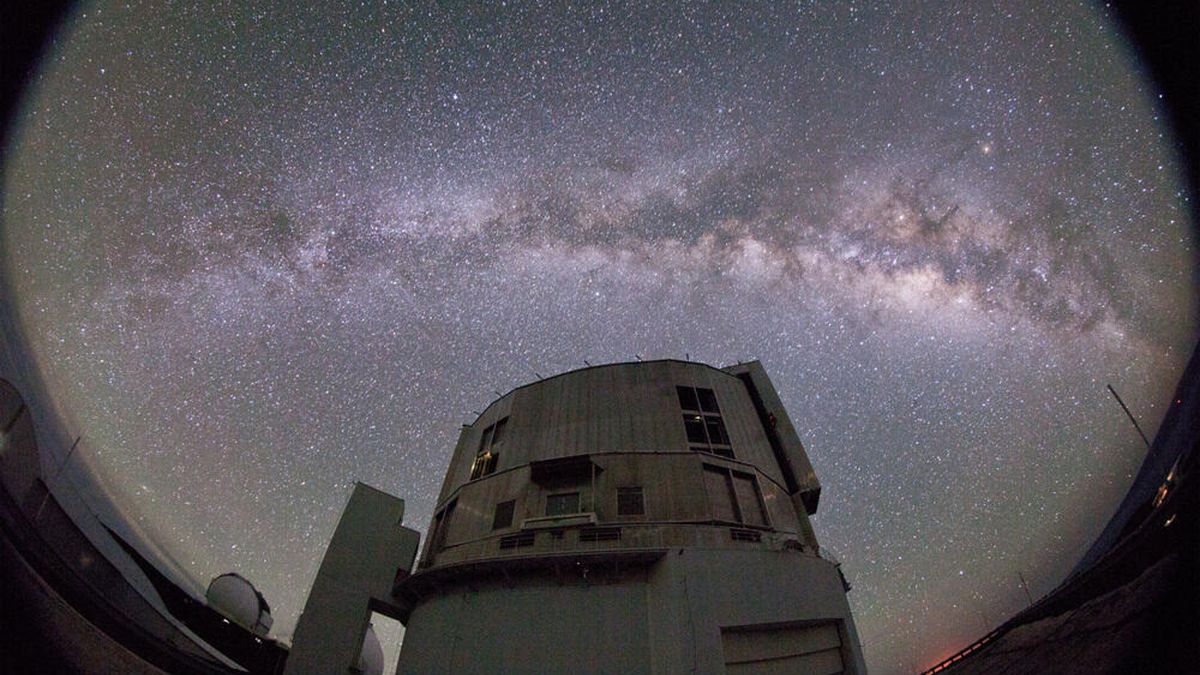Astronomers have discovered a previously unknown pair of potential satellite galaxies orbiting the Milky Way. The locations of these dwarf galaxies suggest that hundreds of other unknown miniaturized galaxies could be hiding around us — potentially challenging our understanding of the galaxy’s edges.
A satellite galaxy is a group of stars, either in a circular blob or a halo-like shape, that orbits the Milky Way independently from the rest of the galaxy. The largest known satellite of our galaxy is the Large Magellanic Cloudwhich contains about 30 billion stars and can be seen with the naked eye. Other known satellites contain only a few hundred thousand or a few million stars.
a Census 2020 of known satellite galaxies suggests that scientists have found at most about 60 satellite galaxies orbiting the Milky Way. However, there is some uncertainty about the actual number of satellite galaxies, largely because scientists disagree about how large these clusters must be and how far from the galactic center they must be to be considered true satellites, according to NASA.
Related: The Milky Way is visible without a telescope this summer. These are the most important nights to watch out for.
But most astronomers agree that there should be many more currently unknown satellite galaxies. Based on our current understanding of dark matter —which does not react with light, but interacts gravitationally with visible matter and makes up about 27% of the mass of the universe —Researchers have long assumed that the Milky Way should have about 220 satellite galaxies. Our inability to find many more is often called the “missing satellite problem.”
In a new study published June 8 in the journal Publications of the Astronomical Society of Japanresearchers discovered two new potential satellite galaxies, Sextans II and Virgo III. The satellites are located about 411,000 and 492,000 light-years away from Earth, respectively, and are both likely ultra-compact dwarf galaxies (UCDs) — collections of old stars packed closely together, making them brighter than other satellite galaxies.
The discoveries do not help solve the missing satellite problem, however. Instead, the locations and orientations of these potential satellites indicate that there are even more satellite galaxies than scientists originally realized. This raises a new issue, which researchers have dubbed the “too many satellites problem.”
Related: Is the Milky Way moving around something?
Researchers discovered the UCDs using the Hyper Suprime-Cam (HSC) attached to Japan’s Subaru Telescope at Mauna Kea Observatories in Hawaii. This instrument has been searching a region of space about 33 light-years across for the past several years. Based on the estimated 220 satellite galaxies postulated by the missing satellite problem, a region this size should have about four satellite galaxies on average, Universe Today recently reported.
However, the latest discoveries bring the total number of satellites HSC has found in this region to nine. If this concentration of satellites is consistent around the Milky Way, it would mean that there could be at least 500 satellite galaxies around the Milky Way, researchers wrote in a rack.
In the past, scientists have proposed several solutions to the missing satellite problem, including the claim that some satellite galaxies hiding behind larger satellites and that others so diffuse that they are almost impossible to detect with current technology. However, it is unlikely that these factors can explain an overabundance of stars, leaving scientists with no real way to explain the new results.
“The next step is to use a more powerful telescope that captures a wider view of the sky,” said study co-author Masahi Chibaan astronomer at Tohoku University in Japan, said in the statement. This should help clarify how common satellite galaxies really are, he added.
Such a telescope is the upcoming Vera C. Rubin Observatory — an ultra-modern facility equipped with the the world’s largest digital camerawhich is expected to come online in 2025, Chiba said. “I hope many new satellite galaxies will be discovered.”
